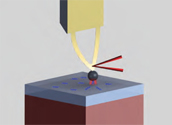Despite great progress in developing efficient thermal energy conversion technologies since the industrial revolution, heat-to-electricity conversion has been primarily based on thermal-mechanical systems such as steam and gas turbines and internal combustion engines. Such engines are most suitable for power generation at large scales with high power density energy sources, but their efficiency suffers when they are used for small-scale installations with low power density energy sources, such as solar energy, or waste heat from transportation, industrial processes, and buildings. The Solid-State Solar-Thermal Energy Conversion Center (S3TEC) aims at advancing fundamental science and developing materials for efficient direct heat-to-electricity energy conversion technologies that are suitable for both small and large-scale deployment. The focus on heat to electricity conversion stems from energy input and usage trends. Over 90% of the world’s primary energy sources (fossil fuels and nuclear energy) is converted into electrical and mechanical energy through thermal processes. In the USA, only ~40% of energy input is utilized and the rest is rejected as waste heat, far below the 2nd law limit.

The S3TEC Center was funded by the DOE BES EFRC program in 2009 as a part of its regular program, and was renewed in 2014 for another 4-year period. The S3TEC Center is focused on scientific underpinnings for using solar energy as well as terristrial waste heat as the heat source, and on converting the heat into electricity via thermoelectric (TE), thermophotovoltaic (TPV) and thermogalvanic (TG) technologies. Solar thermoelectric generators (STEG) use solar radiation to create a temperature difference across a solid-state TE material to generate electricity. Solar thermophotovoltaics (STPV) uses solar radiation to raise the temperature of a terrestrial object, which then emits photons with energies optimized to the bandgap of a photovoltaic (PV) cell to generate electricity. Thermogalvanic devices exploit the temperature dependence of the potential of electrochemical reactions, and convert heat into electricity by running complementary electrochemical reactions at different temperatures (either at the same time or through a cycle).
Our achieved technological advances are enabled through fundamental studies on the transport of electrons, phonons, photons, ions and spins and their interactions, leading to improved materials performance. There fundamental processes are studied through combined theoretical/computational and experimental approaches, including first-principles and mesoscale transport simulations, phonon/neutron/electron spectroscopies, material synthesis and system integration/testing. S3TEC aims at addressing grand challenges, connecting nanoscale to gigawatts by advancing the basic science underpinning direct energy conversion technologies and by discovering materials meeting the needs for application in performance, cost, and reliability and for fundamental understanding.


